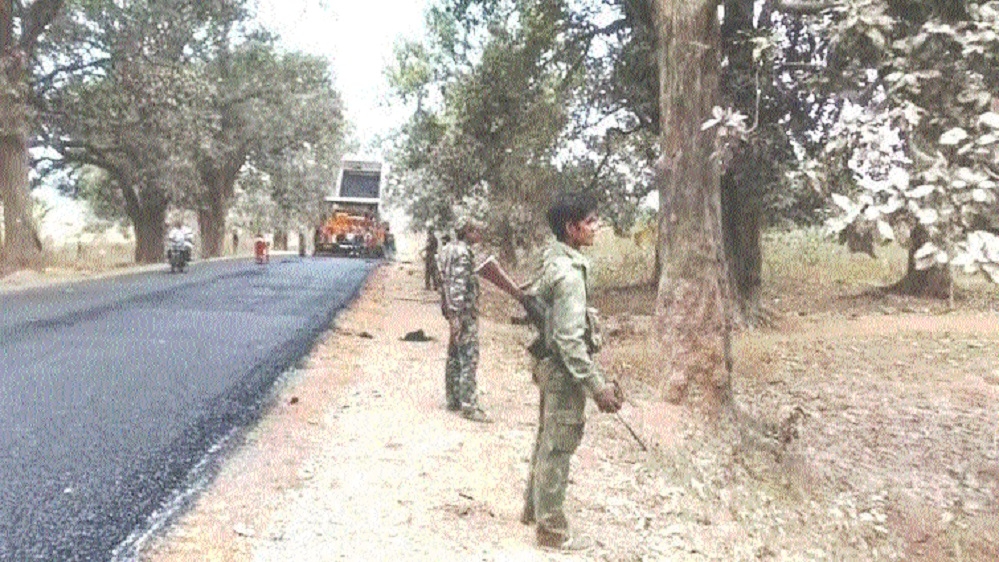From Red to Green
| Date :10-Apr-2025 |

Our Correspondent
BASTAR,
Once known as the epicentre of Left-Wing Extremism, the southern border districts of Chhattisgarh are now scripting a new narrative, one of inclusive development, public participation and sustained governance.
Under Chief Minister Vishnu Deo Sai’s leadership, these previously insurgency-ridden regions are undergoing a quiet but determined transformation.
In the past 15 months, the State has pushed forward with a dual strategy: firm crackdowns on Naxal activity and an aggressive rollout of welfare schemes. The result is visible on the ground, roads are being laid, schools are reopening, public confidence is returning, and government presence is becoming
routine in areas once considered inaccessible.
Of the seven most severely Naxal-affected districts, six -- Kanker, Bastar, Bijapur, Sukma, Dantewada and Narayanpur - fall within Bastar division, while the seventh, Mohla-Manpur-Ambagarh Chowki, belongs to the Durg division. All of them are now central to the state’s flagship development push. The government’s focused efforts under schemes such as the Pradhan Mantri Awas Yojana, PM Janman, Ayushman Bharat, PM-KISAN, Ujjwala Yojana, and MGNREGA have led to marked improvements in public services. Over 29,000 new job cards have been issued under MGNREGA, including 5,000 in villages identified under the
state’s Niyad Nellanar outreach programme, a key initiative for connecting remote tribal habitations to the
mainstream. Housing schemes have made substantial progress. Nearly one lakh houses have been sanctioned across the seven districts, 07 per cent of the state’s original target. In Niyad Nellanar villages alone, 1,100 homes have been cleared, registering a staggering 300 per cent increase compared to previous periods.
Health and welfare indices have also shown significant upward trends. Beneficiaries under Ayushman Bharat have risen from 19.24 lakh to 21.05 lakh, while the PM-KISAN scheme has seen a 20.12 per cent jump in registered farmers. The number of Ujjwala connections in these areas now exceeds 3.61 lakh.
To support this civil outreach, 46 new security camps have been set up in Naxal-affected zones. These camps have extended the administrative reach to 145 villages, where integrated development camps and welfare drives are now regular features. Of these, 124 villages have already been connected by roads; work is in progress in the remaining 31. Educational infrastructure, which had suffered due to conflict, is being revived. From 122 operational schools in March 2024, the count has now climbed to 144. Student enrolment has grown by 20 per cent. Anganwadi centres have also expanded — from 193 to 202 — with a 30 per cent rise in registered children.
Under the Special Central Assistance (SCA) scheme, 1,302 works have been approved across Bastar, Bijapur, Dantewada, Sukma, Narayanpur, Kanker and Mohla-Manpur-Ambagarh Chowki. Of these, 308 have been completed and 999 are currently underway.
For the current fiscal year 2024–25, a total of Rs 220 crore was allocated for development in these regions. Of this, Rs 200 crore has already been received and fully utilised on infrastructure, security, healthcare, education and agriculture-related activities. What was once a stronghold of armed insurgency is now steadily becoming a landscape of opportunity. Bastar — long seen as a symbol of neglect — is emerging as the face of a resilient, reform-driven Chhattisgarh.
The transformation stands as a compelling testimony to the state’s political will, administrative grit and grassroots engagement.
As CM Vishnu Deo Sai’s government continues its decisive battle against Naxalism, it is also laying down the foundations of a more equitable future — where development reaches the last village, and fear gives way to hope.
